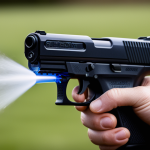Essential Kumite Drills for UK Karate Enthusiasts: Master Your Performance!
Understanding Kumite: The Heart of Karate
Kumite, the sparring component of karate, is where theory meets practice. It is the dynamic and interactive aspect of karate training that tests your skills, strategy, and physical conditioning against an opponent. For UK karate enthusiasts, mastering kumite is crucial for advancing in the martial art and enhancing overall performance.
Kumite originates from Japan, where karate was born, and is an integral part of various karate styles, including Shotokan Karate, Kyokushin Karate, and others. It involves applying the techniques learned in kata (forms) and kihon (basics) in a live, interactive setting. This practice not only improves your combat skills but also enhances your self-defense capabilities.
Also to discover : Effective Techniques for UK MMA Fighters to Manage Adrenaline and Boost Performance
Beginner Kumite Drills: Laying the Foundation
For beginners, starting with the right kumite drills is essential to build a strong foundation. Here are some key drills to get you started:
Basic Stances and Movements
- Zen-kutsu-dachi (Front Stance): This stance is fundamental in karate and provides stability and balance.
- Kiba-dachi (Horseback Stance): Used for defensive movements, this stance helps in shifting weight and generating power.
- Tsugi-ashi (Shuffling): This movement helps in advancing and retreating while maintaining balance.
Defensive Techniques
- Age-uke (Rising Block): A basic block used to deflect high incoming attacks.
- Gedan-barai (Lower Block): Used to block kicks and punches aimed at the lower body.
- Kagi-zuki (Hook Punch): A defensive punch used to counter an opponent’s attack.
Offensive Techniques
- Jab and Cross: Basic punches that form the foundation of most karate combinations.
- Mae-geri (Front Kick): A straightforward kick that targets the opponent’s stomach or chest.
- Mawashi-geri (Roundhouse Kick): A powerful kick that can target various parts of the opponent’s body.
Here is a detailed list of beginner kumite drills:
Also read : Unlock Peak Focus: Essential Techniques for Mental Sharpness in Extensive UK Karate Competitions
- Drill 1: Basic Sparring
- Practice basic stances and movements while engaging in light sparring.
- Focus on defensive techniques like age-uke and gedan-barai.
- Drill 2: Combination Drills
- Combine punches and kicks in sequences (e.g., jab-cross-mae-geri).
- Practice these combinations while moving in different stances.
- Drill 3: Partner Drills
- Work with a partner to practice defensive and offensive techniques.
- Alternate roles to practice both attacking and defending.
Advanced Kumite Drills: Elevating Your Game
As you progress in your karate journey, it’s crucial to move beyond the basics and incorporate more advanced techniques into your kumite drills.
Complex Combinations
- Combination of Punches and Kicks: Incorporate multiple punches and kicks in a single sequence.
- Example: Jab-cross-hook-mawashi-geri.
- Feints and Deceptions: Use feints to deceive your opponent and create openings.
- Example: Fake a jab to the head and then kick to the stomach.
Dynamic Movement
- Shifting and Rotating: Practice shifting your weight and rotating your body to generate power and evade attacks.
- Example: Rotate your body while executing a mawashi-geri to increase its impact.
- Footwork Drills: Improve your agility and speed with advanced footwork drills.
- Example: Practice tsugi-ashi while moving in a zig-zag pattern.
Here is an example of an advanced kumite drill:
- Drill 4: Advanced Sparring Scenarios
- Practice sparring in different scenarios, such as against multiple opponents or in a confined space.
- Focus on adapting your techniques to the situation and using feints and deceptions effectively.
Equipment and Safety: Essential for Kumite Training
When engaging in kumite, safety is paramount. Here are some essential pieces of equipment and safety tips:
Protective Gear
- Mouthguard: Protects your teeth and mouth from injury.
- Hand Pads/Gloves: Protects your hands and your opponent’s face.
- Chest Guard: Protects the torso from kicks and punches.
- Groin Guard: Essential for both men and women to protect sensitive areas.
Safety Tips
- Warm-Up and Cool-Down: Always warm up before training and cool down afterwards to prevent injuries.
- Proper Technique: Ensure you are using proper technique to avoid injuring yourself or your opponent.
- Supervision: Train under the supervision of a qualified instructor.
For high-quality martial arts equipment, consider suppliers like Blitz, which offers a wide range of CE-approved gear designed for safety and durability[1].
Training Tips from Karate Masters
Here are some tips from experienced karate practitioners to help you master kumite:
Focus on Technique
- “Technique is more important than strength. Focus on perfecting your techniques, and the power will follow,” says Sensei John, a black belt in Shotokan Karate.
Practice Regularly
- “Consistency is key. Regular practice helps in developing muscle memory and improving your skills,” advises Sensei Maria, a karate instructor with over 20 years of experience.
Adapt to Your Opponent
- “Kumite is not just about executing techniques; it’s about adapting to your opponent’s style and strategy. Be flexible and adjust your approach accordingly,” suggests Sensei Tom, a kumite master.
Comparing Different Karate Styles in Kumite
Different karate styles have unique approaches to kumite, each with its own strengths and weaknesses. Here is a comparative table of some popular karate styles:
| Karate Style | Focus | Techniques | Training Style |
|---|---|---|---|
| Shotokan Karate | Emphasizes deep stances and powerful linear movements. | Includes strong punches, kicks, and blocks. | Focuses on kihon, kata, and kumite. |
| Kyokushin Karate | Known for full-contact sparring without protective gear. | Includes knockdowns and knockouts. | Emphasizes knockdowns and full-contact sparring. |
| Wado-Ryu Karate | Focuses on quick movements and evasive techniques. | Includes soft blocks and rapid counterattacks. | Emphasizes harmony and balance between opponents. |
| Shito-Ryu Karate | Combines elements from Naha-te and Shuri-te. | Includes complex kata and advanced kumite techniques. | Focuses on both physical and mental development. |
Integrating Other Martial Arts into Your Kumite Training
Incorporating techniques from other martial arts can enhance your kumite skills and make you a more versatile practitioner.
Kickboxing
- Kickboxing Combinations: Incorporate kickboxing combinations that involve rapid kicks and punches.
- Example: Jab-cross-hook-roundhouse kick.
- Footwork: Use kickboxing footwork drills to improve your agility and speed.
Muay Thai
- Clinching: Practice Muay Thai clinching techniques to improve your close-range combat skills.
- Example: Use knee strikes and elbow strikes in close-range situations.
- Conditioning: Incorporate Muay Thai conditioning drills to improve your endurance and stamina.
Mixed Martial Arts (MMA)
- Ground Fighting: Learn basic ground fighting techniques to improve your skills in case the fight goes to the ground.
- Example: Practice escaping from bad positions and submitting your opponent.
- Transitions: Practice transitioning between standing and ground fighting.: Mastering Kumite for a Lifetime of Martial Arts Excellence
Mastering kumite is a journey that requires dedication, patience, and continuous practice. By starting with beginner drills, advancing to more complex techniques, and integrating safety measures, you can elevate your karate skills significantly.
Remember, kumite is not just about winning or losing; it’s about the journey of self-improvement and the camaraderie you build with fellow karate practitioners. Whether you are training for competition or self-defense, the principles of kumite will enrich your martial arts experience and prepare you for any combat sport or self-defense situation.
As Sensei John often says, “Kumite is the heart of karate. It’s where you apply what you’ve learned and test your limits. With every drill, every sparring session, you become a better version of yourself.”
So, gear up with the right equipment, find a qualified instructor, and embark on this exciting journey to master kumite and become a true karate enthusiast.


